Day 1 of IFFO's Members' Meeting held in Miami on the 16th April provided a deep dive into technicals and regulations.
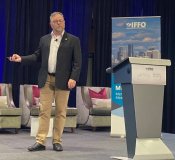 For Tocopherols, International Maritime Organisation (IMO) codes for bulk shipping and containerised shipping are now harmonised (voluntary use now and in code from 1st January 2025), Dr Brett Glencross from IFFO explained. There is also a new IMO schedule being developed for non-reactive fishmeals. For contaminants, regulations for most contaminants are expected (CODEX / EFSA), with new contaminants likely to be included, such as mineral oil hydrocarbons (MOH) and Per- and Polyfluorinated Substances (PFAS). The time frame for the introduction of Maximum residue levels (MRLs) in feed products is unclear, but it is expected much sooner for direct human consumption.
For Tocopherols, International Maritime Organisation (IMO) codes for bulk shipping and containerised shipping are now harmonised (voluntary use now and in code from 1st January 2025), Dr Brett Glencross from IFFO explained. There is also a new IMO schedule being developed for non-reactive fishmeals. For contaminants, regulations for most contaminants are expected (CODEX / EFSA), with new contaminants likely to be included, such as mineral oil hydrocarbons (MOH) and Per- and Polyfluorinated Substances (PFAS). The time frame for the introduction of Maximum residue levels (MRLs) in feed products is unclear, but it is expected much sooner for direct human consumption.
IFFO’s microplastics origins and uptake project continues, Glencross stated, with fishmeal samples collected from both South America and North Atlantic and the key highlights so far are that microplastics predominantly enter at point-of-capture, but there is a lot of variability with this. Fish trials have shown that there is little to no impact on fed species.
Another data gathering project is the Global Feed LCA Institute (GFLI) Data-In-Project, for which IFFO is assisting marine ingredients producers with data submission to help build a holistic and comprehensive measurement based on the use of lifecycle assessment (LCA) analyses. GFLI has established an independent repository with available database and tools and now (v2.0) has close to 1,500 ingredients and Glencross encouraged more to join this exciting project.
Sustainable fishing - Expectations, impacts and the future of social licence
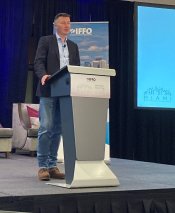 How can the fishing industry use technology to anticipate and address challenges, such as carbon foot printing and demonstrating sustainability? Bottom trawling accounts for one quarter of all seafood landings and is associated with damage to the seafood bed, Prof. Michel Kaiser from Heriot-Watt University in the UK, stated. “Where we have good science, we will end up with responsible fisheries”, he insisted. “Social License to Operate (SLO) is increasingly becoming an accepted norm and the use of data and technology is central to this”. Well managed fisheries are sustainable and discard rates are low for pelagics, with pelagic fishing gear outperforming trawling gear in terms of carbon footprint. The pelagic sector has one of the lowest levels of bycatch.
How can the fishing industry use technology to anticipate and address challenges, such as carbon foot printing and demonstrating sustainability? Bottom trawling accounts for one quarter of all seafood landings and is associated with damage to the seafood bed, Prof. Michel Kaiser from Heriot-Watt University in the UK, stated. “Where we have good science, we will end up with responsible fisheries”, he insisted. “Social License to Operate (SLO) is increasingly becoming an accepted norm and the use of data and technology is central to this”. Well managed fisheries are sustainable and discard rates are low for pelagics, with pelagic fishing gear outperforming trawling gear in terms of carbon footprint. The pelagic sector has one of the lowest levels of bycatch.
However, there are still great opportunities for improvement, with examples such as using fishing gear sensors, unique blockchain ID per catch, real-time monitoring, and VDES maritime communication. Prof Kaiser added that the industry should use AI to our advantage, with blockchain and facial recognition software for crew inventories.
The role of certification in fisheries
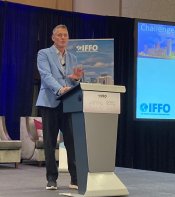 According to Jeff Regnart, from RFM program, Fisheries certification is not marine research nor is it fisheries advice; certification includes verification that research and fisheries advice is based on generally accepted methodology. In turn, certification and ecolabelling are not fisheries management; fisheries management remains the task of the competent authorities. Fisheries certification entails third party verification of government fisheries management performance, which facilitates market access for seafood.
According to Jeff Regnart, from RFM program, Fisheries certification is not marine research nor is it fisheries advice; certification includes verification that research and fisheries advice is based on generally accepted methodology. In turn, certification and ecolabelling are not fisheries management; fisheries management remains the task of the competent authorities. Fisheries certification entails third party verification of government fisheries management performance, which facilitates market access for seafood.
The RFM Program is an industry-driven, wild capture certification programme, which has been operating for 14 years. Ten fisheries and 29 species are certified against the programme, with 80% of their volumes coming from Alaska. Due diligence is central to RFM certification, with the original certification effort taking 8-10 months of intense evaluation by a team of experts, and certification of a fishery lasting for 5 years with annual assessments. Benefits of RFM, include no logo licensing fees, shared Chain of Custody which preserves origin, with programme requirements that evolve with science.
How to improve the carbon footprint and biodiversity impact of aquafeeds
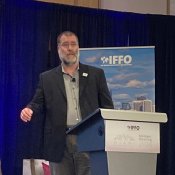 Farmed seafood can have a lower carbon footprint than other animal proteins, and its continued growth is helping to meet a growing demand for seafood and feed a growing planet. However, aquaculture’s use of compound feed remains a climate change and environmental impact hotspot, with the use of compound feed can be responsible for up to 80% of salmon and shrimp farming's carbon footprint and up to 90% of certain environmental impacts such as consumptive land and water use.
Farmed seafood can have a lower carbon footprint than other animal proteins, and its continued growth is helping to meet a growing demand for seafood and feed a growing planet. However, aquaculture’s use of compound feed remains a climate change and environmental impact hotspot, with the use of compound feed can be responsible for up to 80% of salmon and shrimp farming's carbon footprint and up to 90% of certain environmental impacts such as consumptive land and water use.
Addressing the climate change and environmental impacts of aquaculture feed ingredients, along with continued improvements in aquaculture planning and management, can ensure farmed seafood is a low-carbon source of protein – and one that protects and restores nature. Active industry engagement can help drive improvements and meet company and customer ESG commitments. Dave Martin, from Sustainable Fisheries Partnership (SFP) presented SFP’s upcoming online toolkit, about to come out, which aims to help companies support improvements and measure risk and impact. He closed by recommending that marine ingredients companies should get involved with fishery managers and support continuous improvements, while strengthening traceability and human rights due diligence.
What impacts the footprint of fishing?
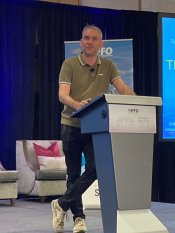 The objective of Life Cycle Assessment (LCA) is to measure, monitor, and report environmental damages exerted by anthropogenic activities for policy support and the private sector. “These systems continue to evolve and address shortcomings, for example with the emergence of an indicators for plastic emissions, discards and by-catch, seabed impacts, and the depletion of targeted biotic resources” according to Dr Ian Vázquez-Rowe, from Peruana Ciclo de Vida y Ecología Industrial (PELCAN) in Peru. A case study in Peru identified current trends in the environmental impact of producing fishmeal and fish oil in two plants belonging to Austral SAA, following a Life Cycle Assessment (LCA) method. This case study shows that provided fish stock overexploitation is prevented through effective management, and fishmeal and fish oil production in Peru remains one of the best low-carbon options for feed.
The objective of Life Cycle Assessment (LCA) is to measure, monitor, and report environmental damages exerted by anthropogenic activities for policy support and the private sector. “These systems continue to evolve and address shortcomings, for example with the emergence of an indicators for plastic emissions, discards and by-catch, seabed impacts, and the depletion of targeted biotic resources” according to Dr Ian Vázquez-Rowe, from Peruana Ciclo de Vida y Ecología Industrial (PELCAN) in Peru. A case study in Peru identified current trends in the environmental impact of producing fishmeal and fish oil in two plants belonging to Austral SAA, following a Life Cycle Assessment (LCA) method. This case study shows that provided fish stock overexploitation is prevented through effective management, and fishmeal and fish oil production in Peru remains one of the best low-carbon options for feed.
Carbon Footprinting Fishing - From Best Practice To Big Data Analysis
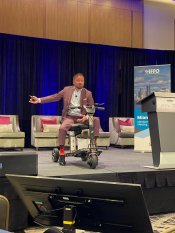 Big data analyses take desktop studies into account and compare them with real time parameters. “We have more than 10,000 fishing vessels on our platform, Hanus Samro, from FishFacts, explained. At the start of the process, we got our clients’ fuel consumption data and we compared these with our figures. The comparison showed that the reality was far off our calculations. This was due to varying weather conditions, winds in particular. The platform now includes weather parameters”. Carbon footprint as well as traceability elements are now well covered. Tracking all the fishing vessels can help get the big picture.
Big data analyses take desktop studies into account and compare them with real time parameters. “We have more than 10,000 fishing vessels on our platform, Hanus Samro, from FishFacts, explained. At the start of the process, we got our clients’ fuel consumption data and we compared these with our figures. The comparison showed that the reality was far off our calculations. This was due to varying weather conditions, winds in particular. The platform now includes weather parameters”. Carbon footprint as well as traceability elements are now well covered. Tracking all the fishing vessels can help get the big picture.
Panel discussion
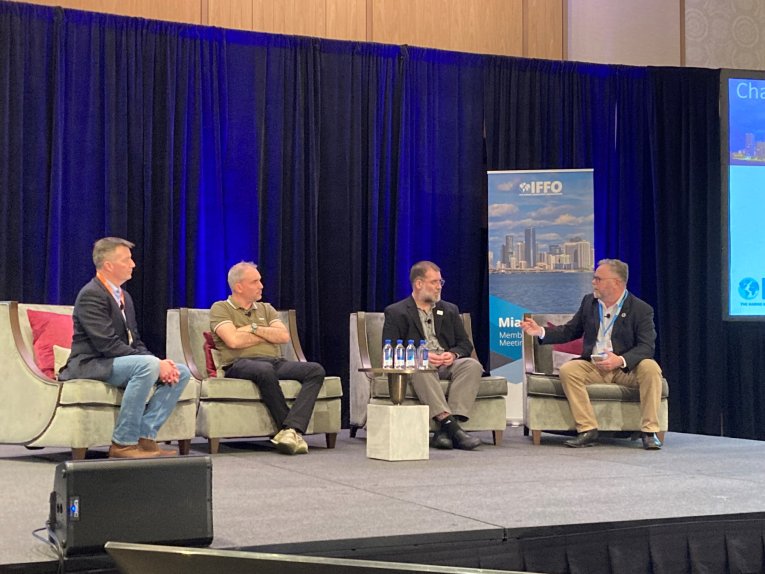
Dr Brett Glencross chaired a panel discussion looking at public perception of fishing activities and how good stories can be better communicated. Professor Michel Kaiser insisted on the complexities of data: “There is a big difference between bycatch of small species as opposed to a marine mammal. Nobody likes to eat them, but everybody cares about them and they catch the headlines”. The same goes with the state of fisheries: “70% of the world’s fisheries are either fully exploited or over exploited. Fully exploited is a good thing, it means fished at MSY, whereas overexploited is a bad thing. Yet, those data are often mixed, which contributes to the public’s confusion. More proactivity by the industry would also be welcome to address issues and help the public understand challenges and opportunities for improvement".
Bringing insights based on life cycle assessment works, Ian Vasquez added that LCA was born to be a holistic tool, but it cannot be the solution to everything. “If we include too many indicators, it may become less accessible and less helpful to build policies. LCA has rules that are mathematical. Not all parameters obey those rules”.
\When it comes to communicating the seafood story in a more efficient way, time is critical, Dave Martin insisted: “It is important to share the facts and bring experts together to manage impacts and raise attention. Gathering the data, analysing it and making it accessible takes time though”. SFP is a seafood NGO which provides its stakeholders with tools to make informed choices, like the public facing FishSource database: “We take those tools and turn them into risk assessment platforms”. Small scale fisheries account for half of the seafood harvested on the planet and 90% of the people. Those fisheries too need to be engaged, he concluded.









